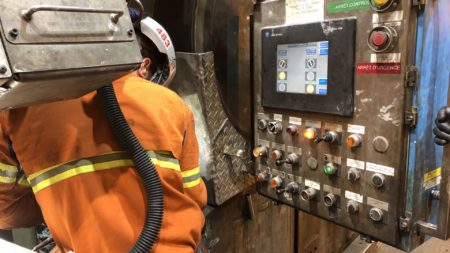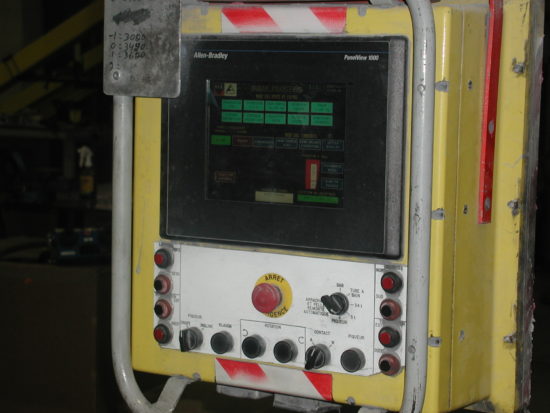Saving 150 Touch Screen Terminals from Becoming Obsolete

If no solution had been found, it would have been necessary to replace all 150 PanelView terminals in the facility.
When Windows 10 was installed on the new computers for the electrical technicians at Alma Works, the software used to communicate with the PanelView touch screen terminals and other equipment was no longer compatible. Instead of replacing the 150 PanelView terminals located throughout the facility (the only solution proposed by the manufacturer), Dany Desbiens, a member of the Alma Works Automation team, came up with the idea of hosting the software on a new virtual server so that it would remain functional and continue to work on the terminals.
His ingenuity and resourcefulness have resulted in significant savings, as replacing the PanelView terminals would have cost about $5 million.
“My role is to take care of the electrical technician’s computers, which are used to program all the equipment for our processes,” explained Dany Desbiens. “This equipment was programmed through a software compatible with Windows 7. When we switched to Windows 10, we replaced the computers and updated the software. The problem was that the new version of the RSLinx software, which allows the computers to communicate with the PanelView terminals, wasn’t compatible with Windows 10.”
All new equipment deployed in the facility must be able to communicate with the programming laptops using the latest version of the RSLinx software. However, it’s impossible to have two versions of the same software on one computer.

An Inexpensive and Effective Solution
To avoid having to change the equipment, Dany Desbiens created a new virtual server on which he was able to install the old version of RSLinx. As a result, employees could continue configuring the PanelView terminals by connecting remotely through their computer. Replacing these screens is no simple matter, and this solution will allow them to be used for several more years.
“Right now, we simply can’t get a newer version of PanelView,” Desbiens added. “This would mean completely updating our system architecture because the new terminals would require the Ethernet network cabling to be changed and all the equipment to be reprogrammed so that it could communicate with the terminals and function properly.”
In the event of a breakdown or defect, employees can continue to use other terminals in the inventory. Within a few hours, they are able to use all the features of the equipment and to continue to operate it without slowing production.
This initiative represents not only significant savings but also an innovative solution for increasing the lifespan of equipment.


